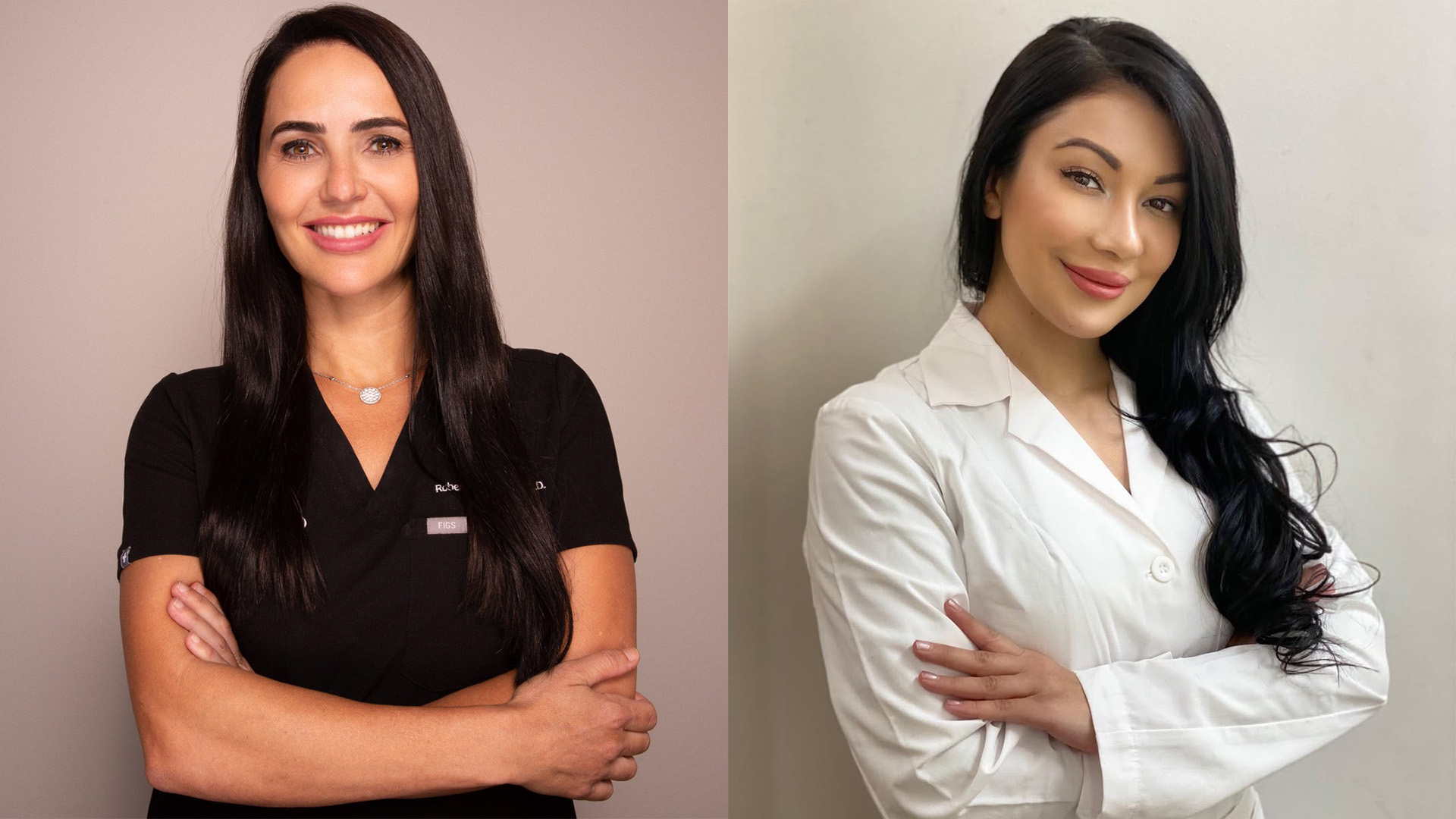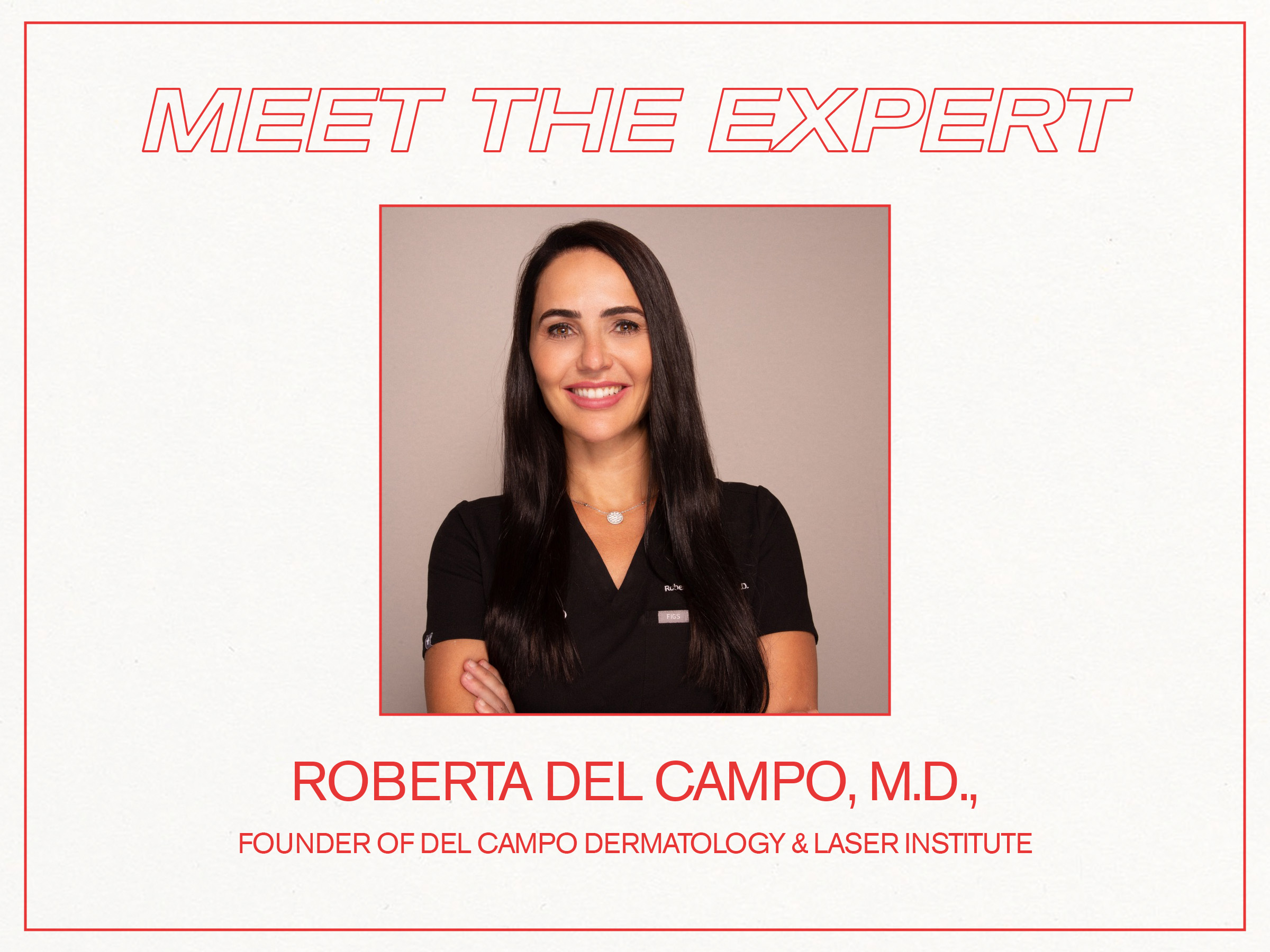What's the Difference Between HA and CaHA Fillers? Here's What You Need to Know
Two experts break it down.

Fillers can be a divisive topic, but you can't deny their plumping, facial-balancing, and contouring benefits. However, hyaluronic acid (HA) fillers specifically have gotten a bad rap in recent years. When injected incorrectly or excessively, you can experience complications like overfilling and migration, resulting in what's colloquially known as "pillow face." So it's no surprise that aesthetic experts have seen a decline in traditional HA fillers like Juvéderm and Restylane, and a surge in the popularity of regenerative calcium hydroxylapatite (CaHA) fillers like Radiesse. To learn more about the differences between the two, I spoke to Evelyn Ramirez, LME, founder and lead aesthetician at Evelyn Aesthetics in New York City, and Roberta Del Campo, M.D., board-certified dermatologist and founder of Del Campo Dermatology and Laser Institute in Miami. Keep reading to discover which one is right for you.
All About HA and CaHA Fillers
Let's start with the basics: What exactly are fillers? "Dermal fillers are injectable treatments used to restore volume, smooth wrinkles, and enhance facial contours," Ramirez explains. "Fillers can plump lips, soften wrinkles, and add definition to areas like the cheeks and jawline. They're a minimally invasive way to rejuvenate and enhance your features."

So, what's the difference between traditional HA fillers and regenerative CaHA fillers? Ramirez distinguishes them by the fact that HA fillers provide immediate plumping and hydration, offering temporary yet effective results. And in contrast, "Regenerative fillers go beyond volume restoration by stimulating collagen and elastin production, promoting longer-term skin rejuvenation and improved texture."

Dr. Del Campo delves further into the science of these fillers, and gives an explanation for the "pillow face" look. "HA filler volumizes and increases the size of the area by holding more water—that's why we love it!" she says. This was a realization for me, but it doesn't take a dermatology degree to guess what happens if we travel, eat more salt, or drink more alcohol—yep, the puffiness ensues. But luckily, "Unlike HA fillers, CaHA fillers don’t attract water, so it's a predictable outcome that looks consistent day by day," Dr. Del Campo explains. In fact, she praises regenerative fillers. "I use them all the time, it's my most used injectable by far. I feel that almost every patient is a candidate for regenerative fillers, whereas hyaluronic acid fillers, which I also love, would only be for select patients or in select areas."
What to Expect at an Appointment: Aftercare, Touch-Ups, and Cost
Interested in trying out one of these fillers? You'll want to start out with a consultation with a certified provider. After they confirm you're a candidate, they'll help you determine which injectable is right for you based on your concerns. For example, if you're looking to restore your face's natural volume and contour and add a natural glow, CaHA filler would be the route to go. If you're looking to specifically plump up your lips, HA filler would be the better option for you.
After your appointment, your provider will share the dos and don'ts of aftercare. But generally, you'll want to keep your head elevated and avoid exercise for 24 hours. In terms of social downtime, you may experience some swelling and bruising, but applying a cold compress and taking pain medication can help mitigate these side effects. Many times, providers will also have you come back in a couple of months to see how the filler is settling, and potentially add more product if needed. In terms of how long each type of filler lasts, HA fillers last up to a year and regenerative fillers can last up to two years, depending on the treatment area.
And lastly, the burning question: How much does filler cost? The (anticlimactic) answer is, it depends. Variables like your location, the practice's pricing structure, and whether the injector charges by syringe or by area of the face can all factor into how much you'll shell out for this treatment. Generally speaking, HA fillers usually start at $500 per syringe, while CaHA fillers start at $600 per syringe. But if you're in a city like New York or Los Angeles, expect to pay more.
Stay In The Know
Get exclusive access to fashion and beauty trends, hot-off-the-press celebrity news, and more.
Looking for the TL;DR? Ramirez sums it up perfectly: "Both options offer unique benefits, with HA fillers delivering instant enhancement and regenerative fillers supporting gradual, natural-looking improvements over time."
Emma is an associate beauty editor of branded content. She’s a passionate writer who loves all things beauty, wellness, and personal growth. Before pursuing writing, she worked in influencer marketing at Gallery Media Group, which owns digital brand PureWow. She lives in New York City, where you can usually find her running to a Pilates class or sipping on a green juice in the park.
-
 In 'Sinners,' Music From the Past Liberates Us From the Present
In 'Sinners,' Music From the Past Liberates Us From the PresentIn its musical moments, Ryan Coogler's vampire blockbuster makes a powerful statement about Black culture, ancestry, and art.
By Quinci LeGardye
-
 Kendall Jenner Has the Last Word on the Best Travel Shoes
Kendall Jenner Has the Last Word on the Best Travel ShoesLeave your ballet flats in your checked bag.
By Halie LeSavage
-
 Prince Harry Gave Nephew Prince Louis an Extremely Rare Five-Figure Gift for His Christening
Prince Harry Gave Nephew Prince Louis an Extremely Rare Five-Figure Gift for His ChristeningUncle Harry for the gifting win.
By Kristin Contino